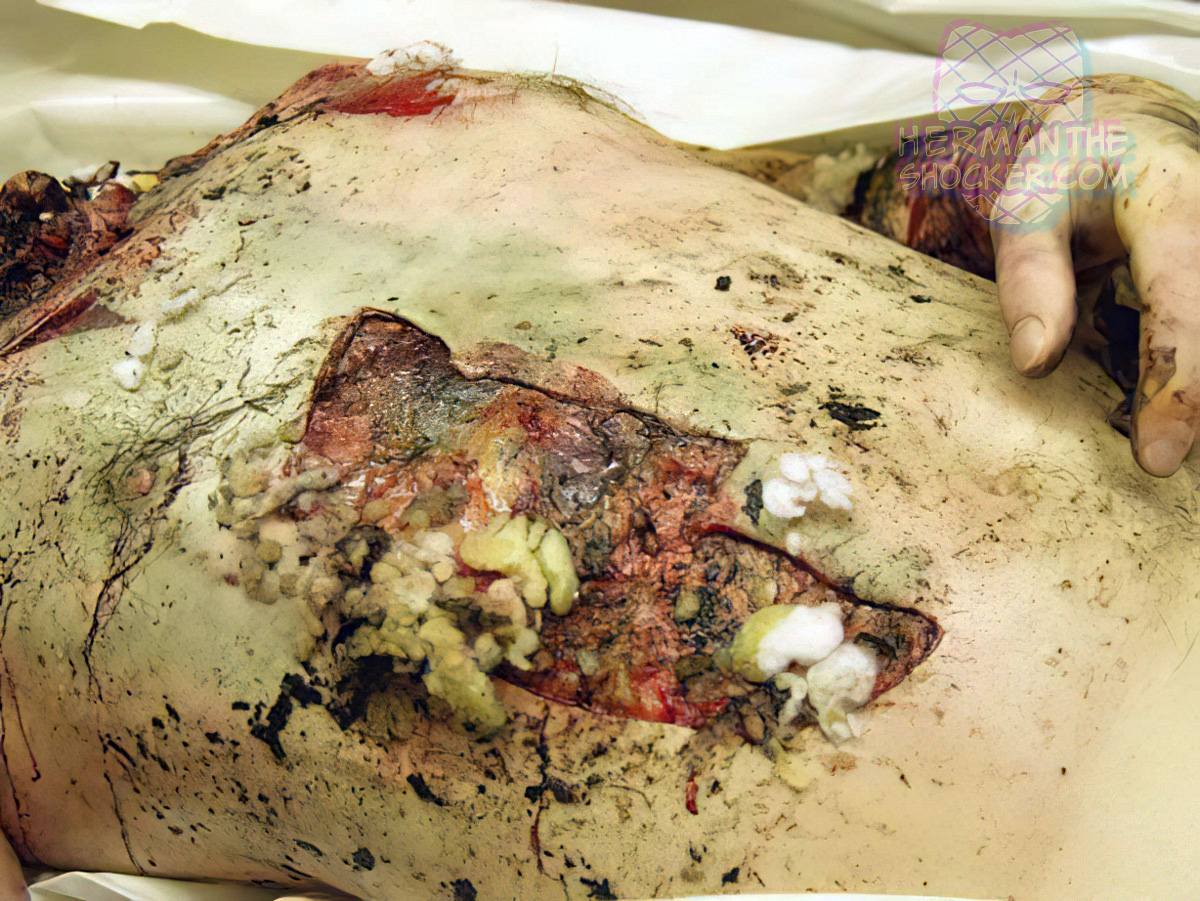Opening of the abdominal body cavity following the (probably accidental) explosion of a homemade pipe bomb containing black powder. Note peppering, bruising, and abrasions seen on and adjacent to the wound’s margin.
Primary blast injuries Injuries directly inflicted on the human body by the sudden increase in air pressure after an explosion are referred to as primary blast injuries and involve almost exclusively gas-containing internal organs such as the lungs, middle ear, and gastrointestinal tract, the organs most vulnerable to overpressure. Primary blast injuries on the external surface of the body are: scattered dermal abrasions and contusions, gross lacerations of the skin that may be interspersed with foreign body material, mutilations or amputations of limbs, opening of body cavities, decapitation, near-total disruption of the body, or even complete body destruction. Primary blast injuries are estimated to contribute to 86% of fatal injuries in explosion victims.
Latest posts








